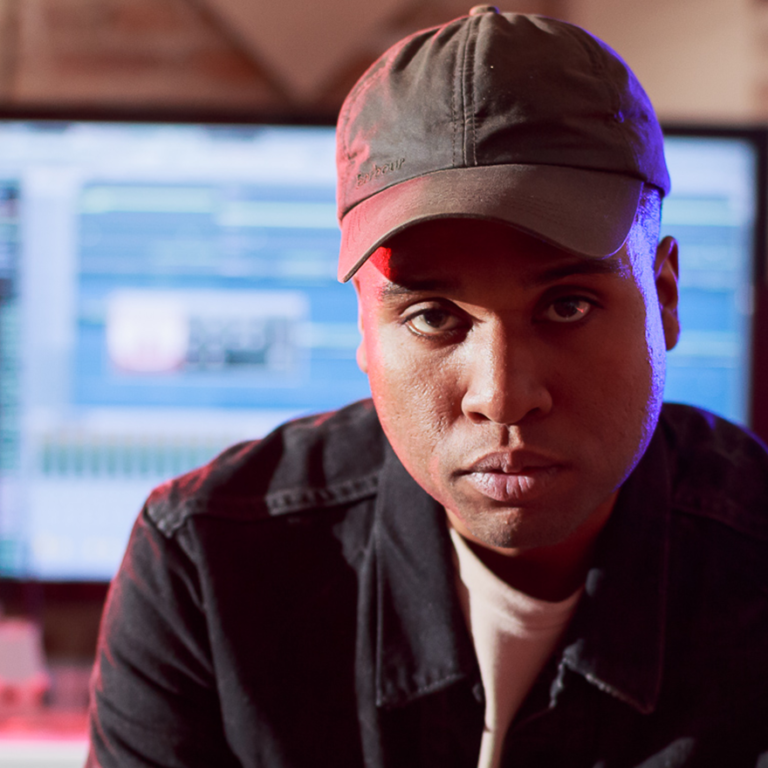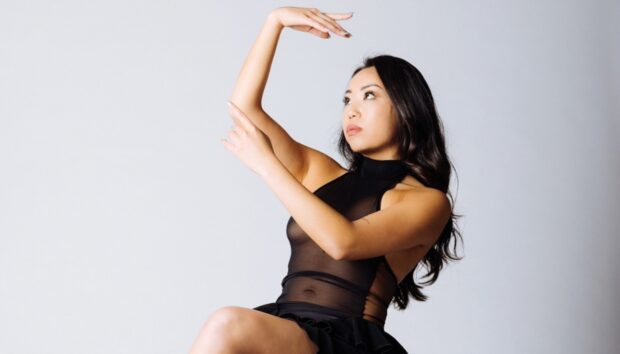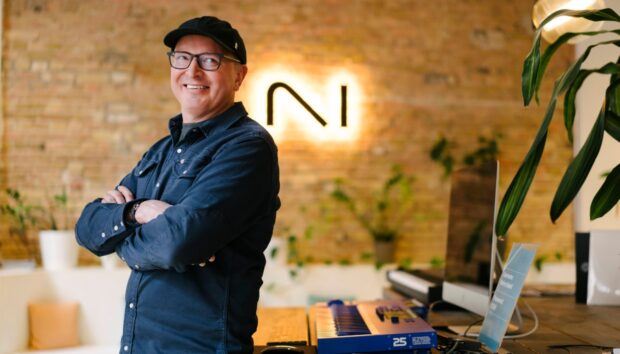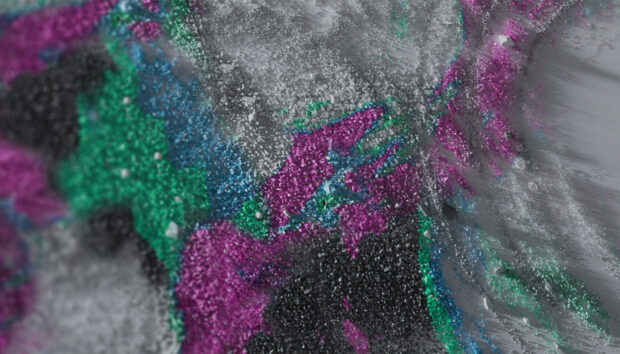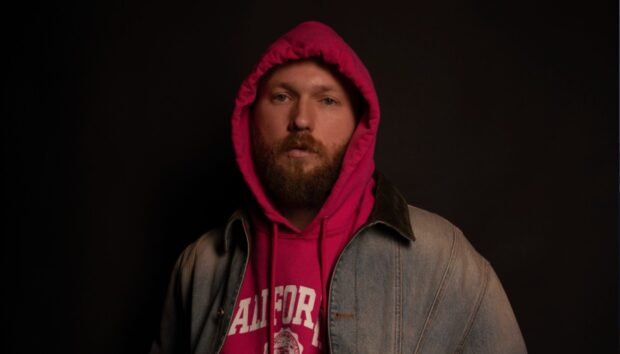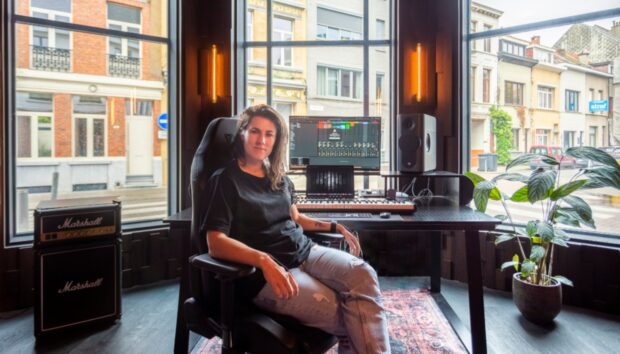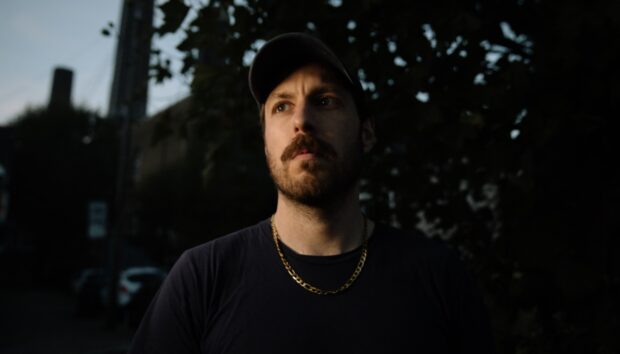Lunice, (real name Lunice Fermin Pierre II), has been producing music out of his native Montreal since first discovering Fruity Loops in the early 2000s. With a background in B-Boy dancing, he made a name for himself with his kinetic live performances and DJ sets as part of Montreal’s Turbo Crunk crew, eventually signing with the Scottish record label LuckyMe
In 2012, Lunice gained a wider audience as one half of the duo TNGHT (alongside Hudson Mohawke), producing a uniquely playful, yet heavy brand of bass music that quickly took the club scene by storm. Their sound’ caught the ear of Kanye West, who sampled their material for his song “Blood on the Leaves” from the 2013 album Yeezus.
Native Instruments caught up with Lunice to chat about studio process, live performance, and the making of his recently released debut album, CCCLX.
I’ve read that when you’re producing, you always focus on creating things that you can perform on-stage.
When I sat down to do the album [CCCLX], the first thing I thought about was, ‘What’s the most effective element in my skillset?’ And the one thing that I know the crowd knows me for is my stage presence, so from that moment on the idea of just making music for the club turned to making music for the stage. I used to just make a bunch of synth sounds, put them together, very spontaneous, in the same way as how you dance in the club, and the DJ mixes one song to the other, and it would hit you just like that. But when I started to switch to the idea of making the music with the performance in mind, it switched the dynamic completely.
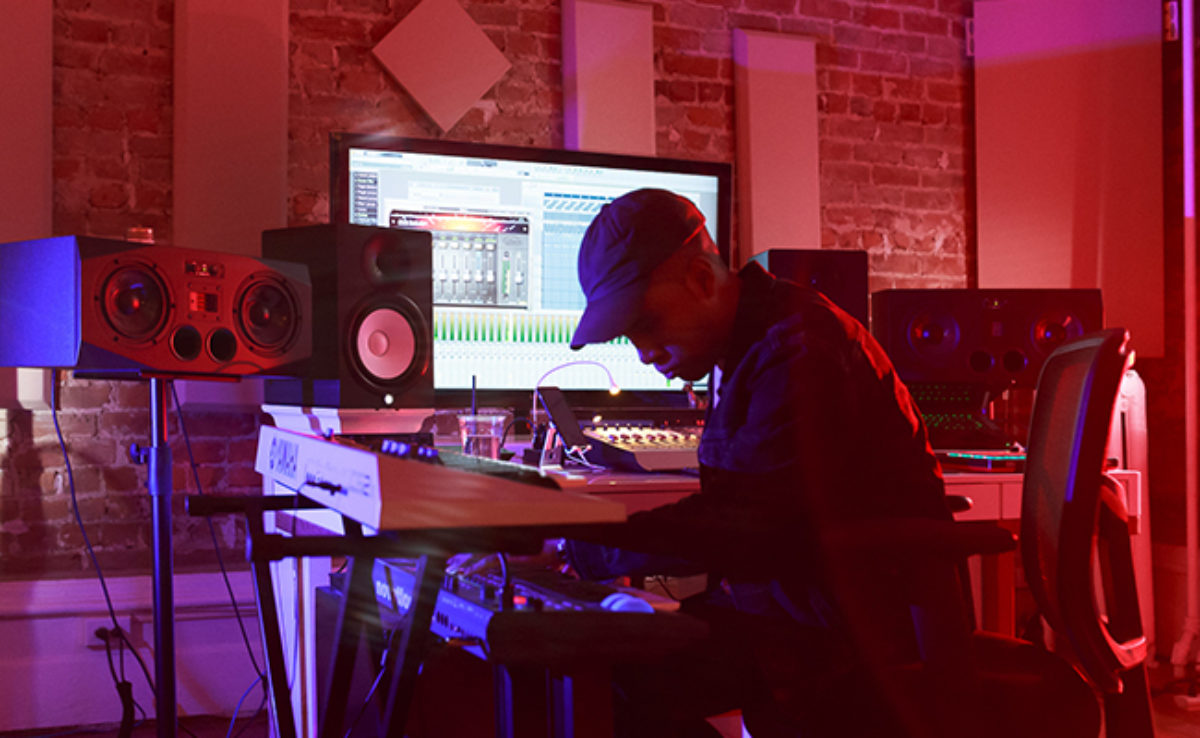
I love improvising. There are points in sets where the power goes out. I just love improvising, and finding ways to cover up a show, making it look like it wasn’t a mess-up. I love that stuff. That, to me, is showcasing, pure showcasing. From the moment I start to the moment my shift is done, I’m in showcase mode that whole time. I’m all in.
Does your background in dance inform a lot of what you do in the studio?
Everything I do in terms of music and performance has come from stuff I studied. Cinema, photography, installation art. When I’m onstage and I see photographers in the pit, for example, I know how to position myself specially for them to get a good shot, or to heighten the chances for them to get a good series of shots, because I have a good idea of what it may look like from that angle.
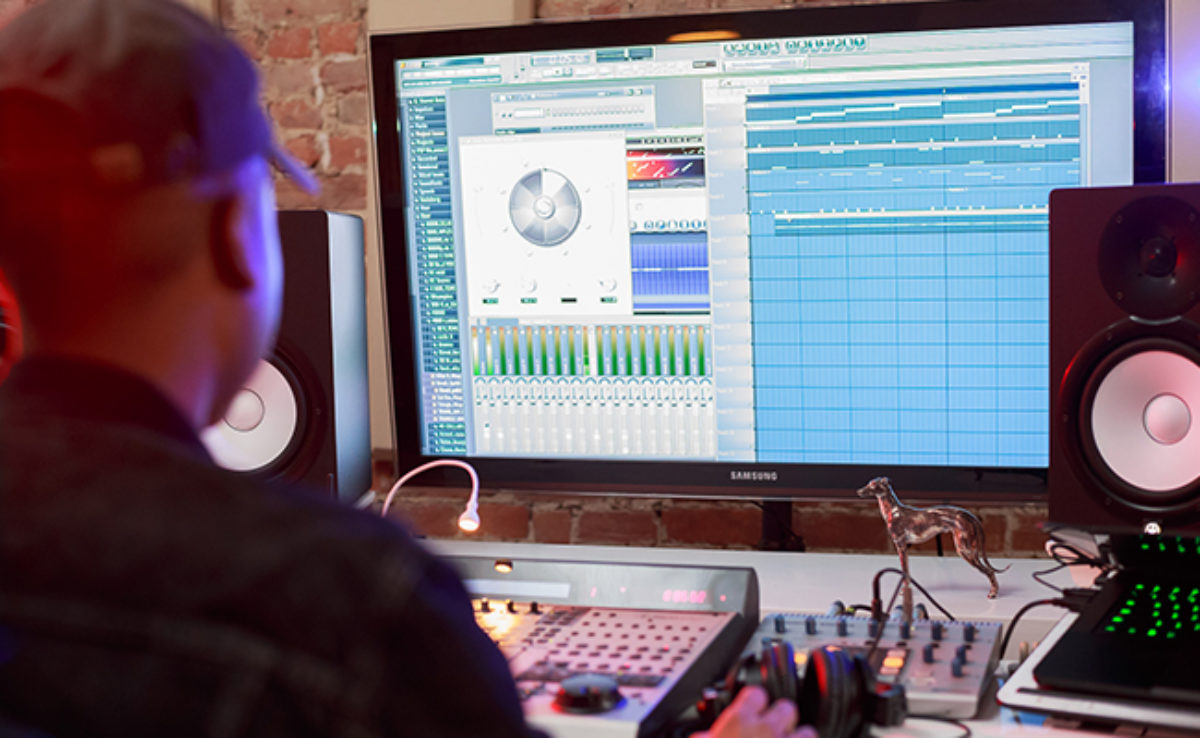
Do you have a particular approach to your studio setup?
The first thing you’ll notice when you come into my studio is that you’ll think it’s my living space, and that’s because it’s all one room. One side is the living room, and one side is studio with gear. I wanted to create a living space more than a recording space, where we can listen to a loop and talk, stuff like that.
There’s a lot of space, and I’ve kept everything clean, all the cables are organized. If someone comes in to collaborate there’s space for their laptop just to make sure that everything flows and nothing stops us. It’s streamlined.

I’ve got your standard MIDI keyboard, and two synths at the moment. The synth sound in ‘The Doors’ is from a Yamaha CSX series synth. I’ve also got a Novation Bass Station. Everything else is from FL Studio using VSTs and tons of Komplete, and also Omnisphere, and for mixing I like to use Sonic Destructor, which HudMo introduced me to. I bounce out all the songs from FL Studio and chop them up in Ableton.
What does your creative process look like these days?
I do a lot of work where I just create a skeleton of a song, and then I go out and take in everything around me, whether it’s going out to see a movie, or going out fishing, just an activity that helps me bring out certain ideas. For a long time, I used to sit down and think of ideas but that’s almost asking yourself too much. I feel that we’re best when we just flow with certain things. When we see people perform on stage, we see them do their best because they are so into what they’re doing.
Everything goes in a cycle for me. When I first started making music I was all sample-based, it was the easier way to introduce myself to music, and as I got used to it it went deeper into production and making my own stuff. For a long time now I’ve been writing my own melodies, and just recently I’ve gotten back into sampling and chopping up vocals, and I’m having a lot of fun with that. That’s how my creative process goes, in cycles…I keep it in that structure.
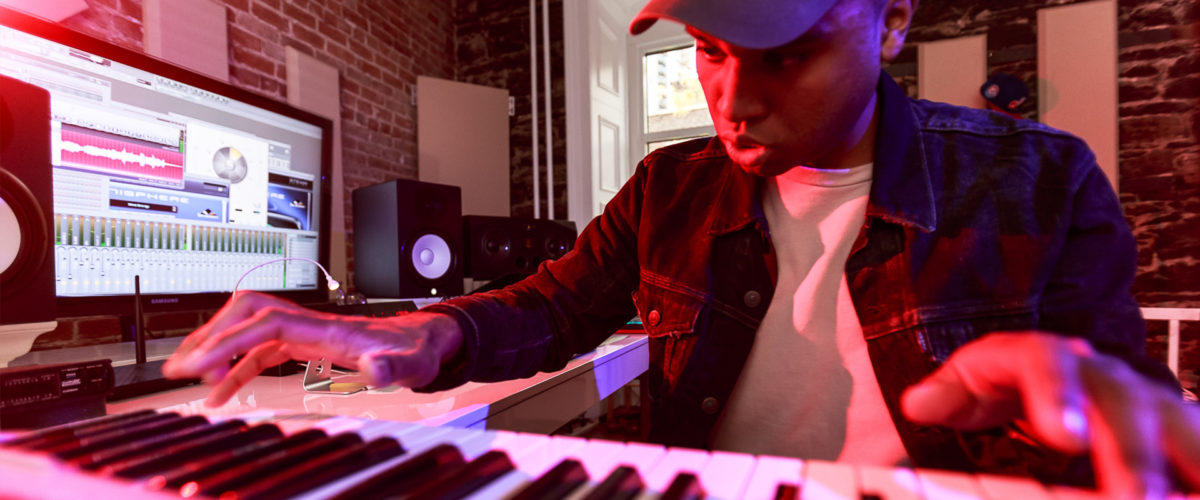
How did you ultimately settle upon the sound of your album, CCCLX
The moment I knew what sound I wanted to go for was back in 2010. I was doing the Red Bull Music Academy in London. They would just let you make whatever music you want; you could go way outside of your normal way of making music, and experiment with all types of instruments that they had on-hand there. There was a song I made there on the compilation called Strahl. It’s super cinematic, big drums…stuff for the cinemas. And as I was making that, and I remember telling myself that if I were to make an album, this would be it. As soon as I come across an idea where I can find so many more opportunities for cool ideas…that’s when I get obsessed with it. That evolved into my sound.
What did you learn from working on the TNGHT record?
Definitely the mixing part…how to make things sound in front, but not lose information, basically. That’s something I learned from Hudson Mohawke, who I would observe as he was working. A lot of times nowadays I’ll hardly use compression on the master, or there’s no compression at all. I’ll just let certain things hit the red with the kick, only because there’s certain information in the red. A lot of that stuff I learned from the TNGHT sessions, and brought to my album.
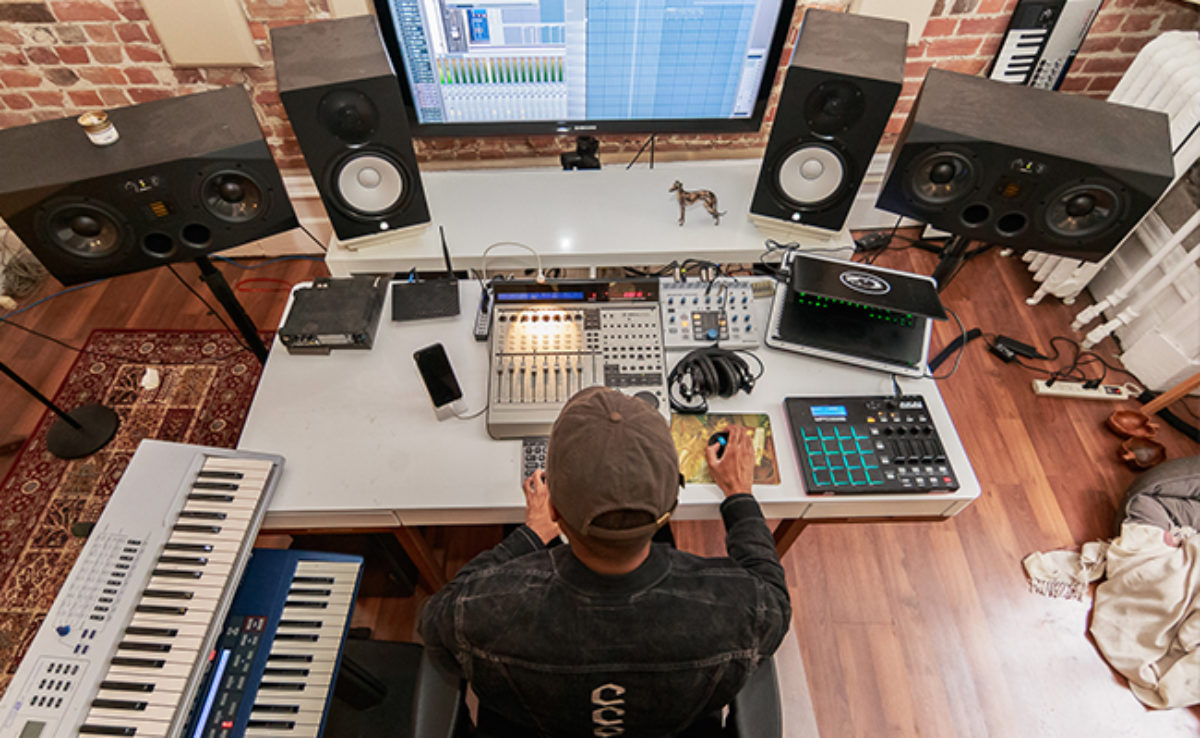
It was also one of the earliest instances I remember of being in the flow state. We made only six songs…the first song ended up being Kanye’s “Blood on the Leaves” and the rest of the songs ended up on the record. We made them really quick. It was really in the moment, just boom boom boom…here’s an idea, lets do this and have a good laugh in the process. That whole playful process really stuck with me. When I first started working on the album, it helped me not hit writer’s block; I wasn’t thinking too hard, but rather being playful with my music.
Did you get ever end up in the studio with Kanye?
Yeah. While I was still working on the album, I ended up in the studio with Kanye. He was working on the Cruel Summer record at the time in Hawaii. He was showing me some cuts off the record to get my take on them, which itself was absolutely mind-blowing…whoever he invited, he would get into the studio to get their opinion and take note of it. He takes everyone’s opinion into consideration.
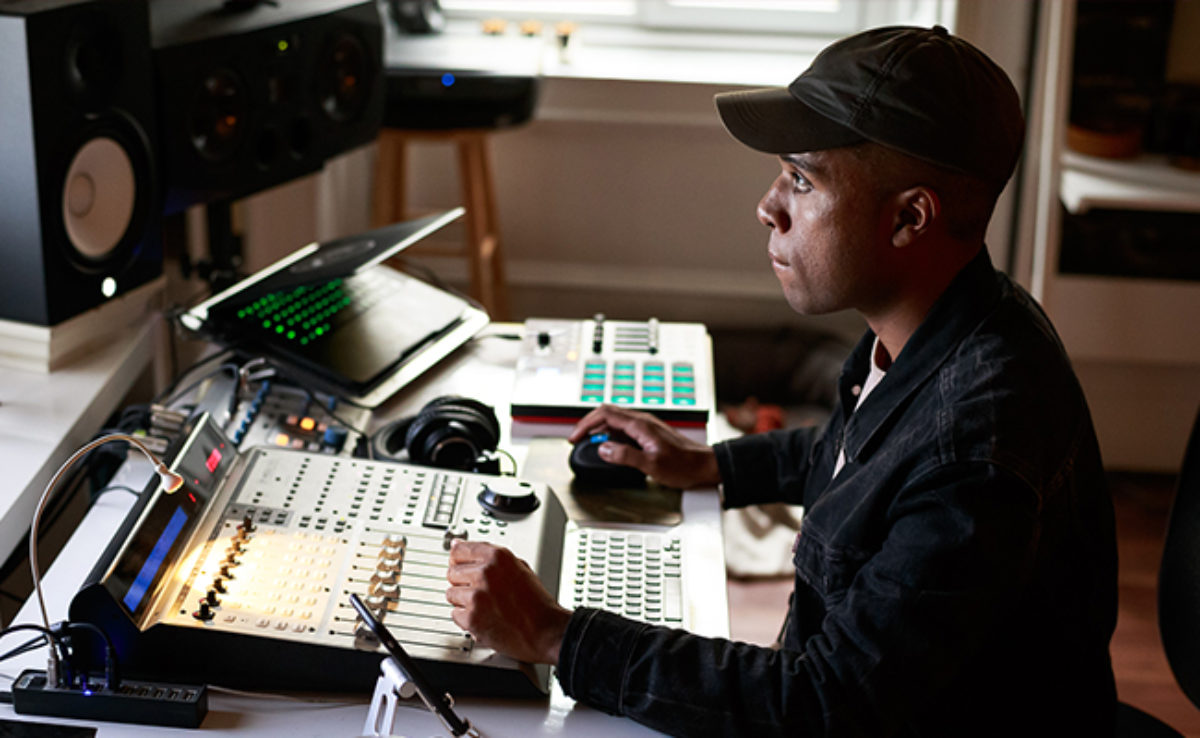
At one point he asked me if I had some records, and I told him I was working on my debut album. I played him the track “Maserati”, which didn’t sound like it does now, but had a similar synth line that was sort of in the background. And I could see him just zone in and mumble a bunch of raps to himself, doing his Kanye nod. The song finishes and he turns around, and I’m just expecting like, ‘Ah this beat was wack, what else you got?’ But instead he says,’This one’s a good idea.’ And that changed everything for me, because he’s paying attention to everything, and would know if there was nothing good in it. He told me that the synth line in that song was a good idea, and that I could just scrap everything else and start anew with it…and so that’s what I did. The song ended up sounding completely different, because I wasn’t focused on that part from the jump. He pulled [that synth line] from out of nowhere. That was a huge thing I brought back to my own creative process, and not just music.
How did that influence you outside of music?
The funny thing is, I’d never been a music guy. When I was a kid I was drawing comics, and eventually breakdancing, graffiti. Kanye was always someone I’ve known about because my sister loved him, but I never took the time to sit down and listen to him…compared to a lot of people my age, who grew up on him. I grew up on Final Fantasy, know what I’m saying? [laughs] But I always recognized and respected him because he was the one I could relate to in the hip hop scene…wearing colorful clothing and just being him. Only over time did I start to realize, ‘This dude’s a genius!’ [laughs] Which really made me feel even more reassured, knowing that I could be a jack of all trades. After the Hawaii sessions, my confidence was through the roof. After that I was sketching stages, sketching clothes…because while he was listening to another song off my album, he was sketching a jacket. I was like, ‘Man, he looks like a kid having the most fun in his life! I need to do this too.’
photo credit: Miguel Legault








